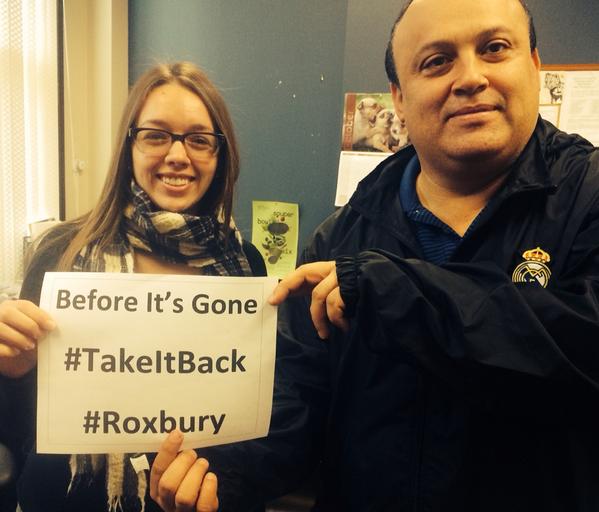Once a neighborhood is transformed from a place of disinvestment to a vibrant community with good schools, parks, transportation, cultural attractions and shopping, the work is not over. There is another challenge looming: How can we assure that rising rents and home values don’t prevent low-income residents from benefiting from those improvements?
The Governing website recently concluded that gentrification greatly accelerated in many cities over the past decade. Nearly 20 percent of neighborhoods with lower incomes and home values experienced gentrification since 2000—more than double the rate seen in the 1990s. Rates increased in 39 of the 50 cities reviewed. (To see the status of a number of them, including Boston, visit the website.)
The issue of displacement and equity is one of the central questions tackled by the Gentrification Learning Community, a big tent of activists, academics, community developers, policy makers and funders who met over 15 months to share and learn. The group was assembled by Boston LISC and the Massachusetts Association of Community Development Corporations, with support from the Barr Foundation and NeighborWorks America Northeast Region; the sessions were facilitated by Cynthia Parker of the Interaction Institute.
 Approximately 40 individuals met quarterly over 18 months and read articles, shared case studies, attended events, and discussed and prioritized policies and strategies. It was made clear at the outset that it was OK to disagree and the purpose was to listen and learn from each other – not to force a shared platform. If common priorities evolved, that was a bonus, but not the purpose. For those of us who are planners, engaging without an end goal was challenging. However, the process of tuning into the gentrification dilemma from different perspectives was edifying.
Approximately 40 individuals met quarterly over 18 months and read articles, shared case studies, attended events, and discussed and prioritized policies and strategies. It was made clear at the outset that it was OK to disagree and the purpose was to listen and learn from each other – not to force a shared platform. If common priorities evolved, that was a bonus, but not the purpose. For those of us who are planners, engaging without an end goal was challenging. However, the process of tuning into the gentrification dilemma from different perspectives was edifying.
The group’s discussions frequently focused on equity and how to ensure that all income levels benefit from investments in communities. For example, David Price from Nuestra Comunidad has proposed seven changes in local and national policies that would mitigate or prevent gentrification, ranging from an aggressive middle-income housing production program, to formation of a community land trust, to a prohibition on large-scale luxury developments in at-risk neighborhoods. He concludes by writing, “The gentrification conversation has to be framed around the underlying issues of power and race that created inequitable development here and make gentrification possible.”
Gail Latimore from Codman Square Neighborhood Development Corp. is focusing on creating affordable housing and business opportunities along transportation corridors in her neighborhood. She commissioned a report on the neighborhood’s susceptibility to gentrification and actions to prevent it. Among the recommended actions are increased advocacy and support for elders living alone, expansion of financial coaching beyond foreclosure prevention, and creation of a job-training and employment serve in partnership with local business owners.
The GLC became a connector of people to efforts. Eliza Parad from Dudley Street Neighborhood Initiative observed, “There’s an overwhelming amount of efforts we are pursuing simultaneously and there is a need to coalesce around a shared platform and messaging, and to focus our energies on coordinating our efforts."
A sampling of the efforts launched by various GLC members are:
- Boston recently hosted a Race and Equity Summit, fitting for a city that is ranked No. 1 for income disparity.
- The city also launched a housing innovation lab to move forward policies to preserve middle-income housing, and is creating a housing stability office.
- The Dudley Street Neighborhood Initiative formed a community land trust more than 25 years ago when the area was characterized by blight and disinvestment. Today, Boston’s Chinatown cultural and civic organizations are looking to the group to assist them in creating a community land trust to protect what is left of their eroding culture in the neighborhood.
- The Just Cause for Eviction campaign is seeking to pass an ordinance that would make it difficult for landlords to raise rents, evict tenants or sell rental property.

The learning group ended up identifying five gentrification priorities, each with corresponding programs, policies and actions:
- Protect renters and prevent displacement.
- Intervene to stop speculators.
- Produce and preserve affordable housing.
- Maintain or increase the economic diversity of neighborhoods.
- Preserve the cultural identity of neighborhoods.
- Land policies, including use of city-owned land for affordable or mixed-use housing and creation of community land banks and trusts.
- Tax policies, such as “flipping taxes” for speculators and property tax abatements for low-income homeowners and owners of affordable rental properties.
- Regulations and enforcement, including enforcement of (and education on) deed restrictions, codes and tenant rights.
- Laws and ordinances, such as those governing condo conversions, prioritization of nonprofits and community land trusts when deciding land use, inclusionary zoning and mandates for local hiring of workforces.
As a planner and outcome-oriented person, I am encouraged that a shared platform can emerge from this effort and that the GLC members will remain connected as they push an agenda of equity forward. As a GLC participant, I’m grateful for the experience to get to know and learn from so many dedicated people representative of the rich diversity that – at the moment – still exists in Boston.

